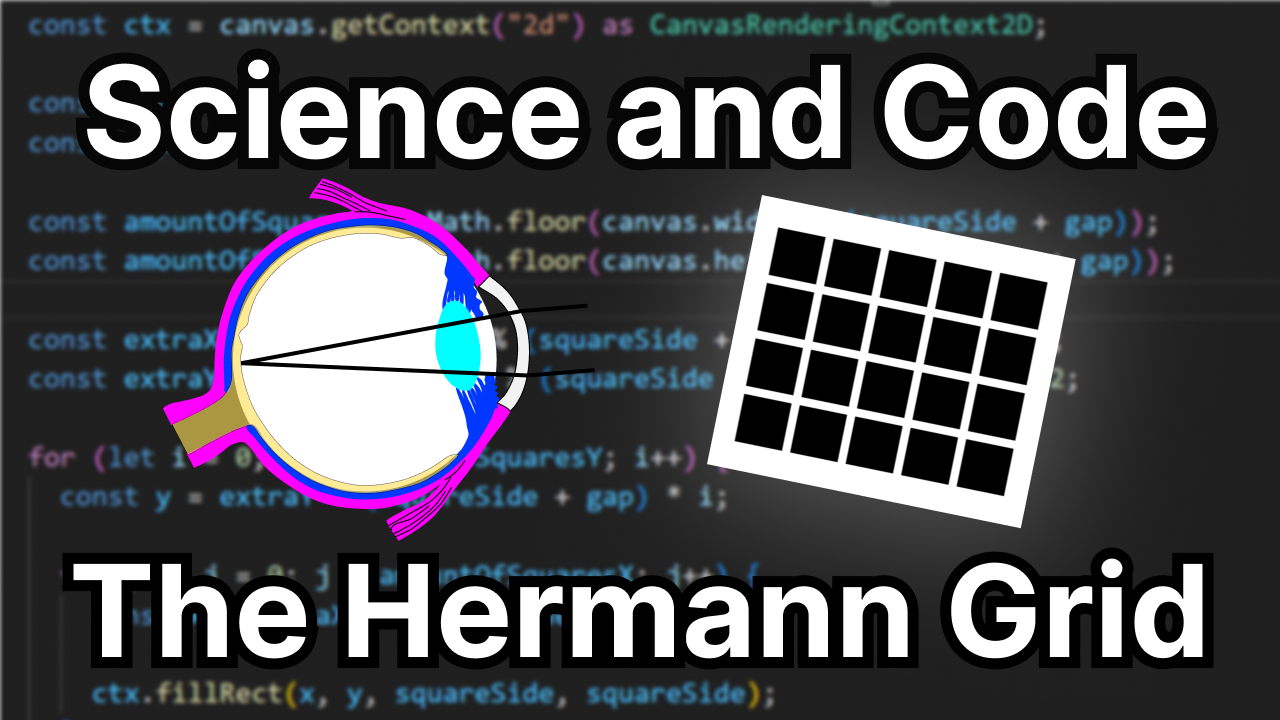
Published: October 27, 2023 at 12:00 AM
Updated: June 4, 2024 at 11:48 AM
By: Gregory Kirchoff
Building and Understanding The Hermann Grid
You can find the tutorialof how to make this on my Youtube channel!

You should notice faint, dark spots in the intersections of the grid lines in the periphery of your vision. If try to look at any one directly, it vanishes.
The most common explanation for this is lateral inhibition. The primary drivers of this are retinal ganglion cells.

Retinal ganglion cells (RGCs) are a type of neuron in the eye that receive information from photoreceptors via two intermediary neuron types, bipolar cells and amacrine cells.
One RGC receives input from multiple photoreceptors, and this makes up the RGC’s receptive field. When photoreceptors in the center of this receptive field detect an increase in luminance, aka more light, they send excitatory signals to the RGC to get it to fire its own signal towards the brain, letting it know that there is something there. However, the photoreceptors on the outside of this photoreceptor cluster send inhibitory signals to the RGC when they detect more light, trying to get it to not fire.

Because of this, the intersections have more areas of intense luminosity around them compared to points in the middle of a grid line. The increased peripheral luminosity at the intersections trigger more of the photoreceptors at the edges of a receptive field, causing it to be less activated, and thus the area of vision it controls appears darker.
